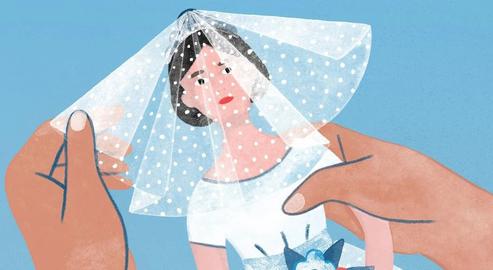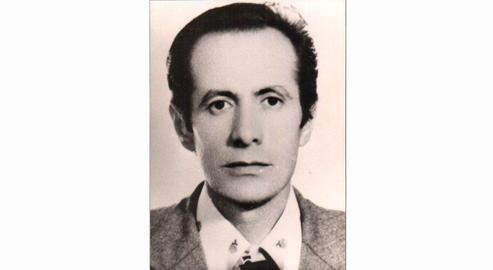Some 9,058 girls between the ages of 10 and 14 were married in Iran in summer 2020, according to the latest report by the Statistical Center of Iran. The data, which was published on January 31, coincided with the beginning of celebrations of the anniversary of the Iranian Revolution. It also stated that 188 divorces involving children had taken place in the same period.
Over the years MPs have tried to block the practice of child marriage in Iran by raising the legal marriageable age. But time and again, this has been met with either resistance from other MPs or with condemnation and opposition from hardline religious figures.
Inspired by Religion and Patriarchy; Sustained by Ignorance and Brute Force
Asked why such a tragic state of affairs is still being permitted by lawmakers, Samaneh Savadi, a lawyer and women's rights activist, tells IranWire: "You consider child marriage a sad thing. But from the legislature's point of view, a girl marrying, even when she is nine years old, is not only not sad – it is an auspicious event."
Legislators who enact marriage laws based on Islamic jurisprudence often refer to a narration by eighth-century Muslim scholar Imam Sadiq, who said a “happy father” does not allow his daughter to menstruate in his house. This particular interpretation of Islam today forms the basis of Iranian matrimonial law.
Furthermore, Savadi says, “In patriarchal thinking, marriage is something that causes a woman to develop, and the younger a girl gets married, the better she becomes. This makes marriage something to be celebrated."
Advocates for child marriage sometimes argue that according to the official statistics, the number child marriages that end in divorce is negligible; for example, in the second quarter of last year 188 divorces were registered compared to more than 9,000 marriages. This is held up as an argument for the relative success of such marriages.
In fact, children’s rights activist Hamed Farmand says, these marriages often take place in rural and superstitious communities where the child may not be able to escape the marriage if they want to. In Iran, even adult women in large cities, who are equipped with legal knowledge, an education, employable skills and other resources sometimes face obstacles to divorce.
"Children who are forced by their families to accept marriage at a young age,” Farmand says, “are generally unaware of their rights. And where there are cases of them raising their voices in protest, they are often still forced to endure the situation by those close to them. As a result, it is natural that the number of divorces is low. But this has nothing to do with the stability of the marriages."
Furthermore, he adds: “The younger the child, the more violent the incident and the more severely the rights of the child are being violated. Marriage reduces the child's level of access to resources that might have empowered them. Now consider that more than 9,000 children have been deprived of their rights in this way in just three months."
Masoumeh Ebtekar, Iran's current vice president for women and family affairs, has previously said that 30,000 marriages involving girls under the age of 14 take place every year in the country.
Hamed Farmand says of this figure: "The statistics cited by Ms. Ebtekar were published in 2018, and we don’t have any newer figures after that. But based on this number of registrations in the second quarter of 2020, the situation is alarming."
Puberty is Not a Requirement
One of the most controversial comments about child marriage has been made by Hassan Rahimpour Azghadi, a prominent conservative Shia scholar. "In Islam,” this pundit has said, “there is no age limit for marriage at all. They can get married even in elementary school."
Rahimpour Azghadi, who is also a member of the Supreme Council of the Cultural Revolution, believes that "Islam thinks openly about the relationship between a girl and a boy". Defending the issue of child marriage, he says: "Islam says to get married as soon as the sexual instinct is awakened, not even fully awakened. Islam does not make puberty a condition for marriage at all."
According to Islamic law, the age of puberty is nine for girls and 15 for boys. The registration of marriages for girls under the age of 13 and boys under the age of 15 is subject to the "permission of the guardian, provided it is expedient, at the discretion of a competent court."
According to the Islamic Republic’s interpretation of Sharia law, there are also no restrictions on who can recite the marriage verse. That means a father can marry off his daughter and conduct the ceremony himself, and it will be legally binding. In some parts of Iran this is commonplace, and these at-home weddings are not reported to the Statistical Center of Iran. Due to girls’ lack of access to education, they have no means of terminating the contract either.
Hassan Norouzi, the speaker of the Judiciary Commission in the tenth Iranian parliament, was among the staunchest historic proponents of child marriage. “My own grandmother got married at the age of nine,” he once said, “and she had no problem!”
Misleading Historic Antecedents
Asked why decision-makers compare today's women and girls to those of two or three generations ago – and indeed, cite their grandmothers’ experiences when discussing legislative change in the present – Samaneh Savadi says: "Women’s access to resources and having knowledge and awareness goes beyond the approved framework of patriarchy.
“This departure from the norm is commonly referred to as ‘indecency’ and a ‘lack of femininity’. The fact that women get married as children and serve their husbands and have many children is deceitfully sold as forbearance and sacrifice. This is considered to be for the good of women. That’s why we rarely hear the voices of women who marry as children."
Farmand also points out: "Don’t forget that the majority of these marriages are between 10- to 14-year-old girls and adult men. Thus power relations are formed, in which the child doesn’t have the necessary and appropriate capacity to defend herself against possible threats, violence and marital rape.”
Related coverage:
Iran’s Parliament Pushes for Population Increase and Promotes Child Marriage
visit the accountability section
In this section of Iran Wire, you can contact the officials and launch your campaign for various problems


























comments